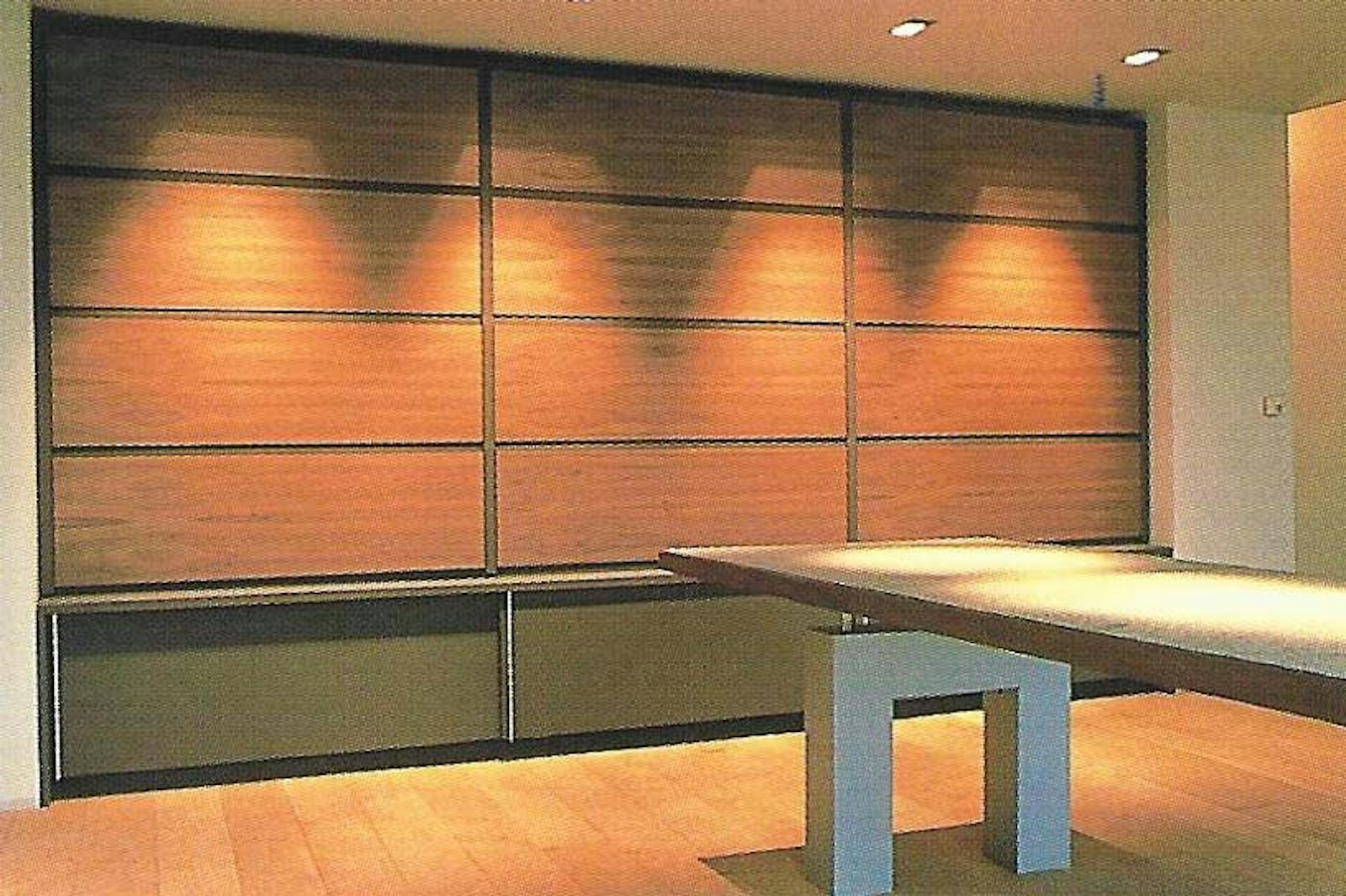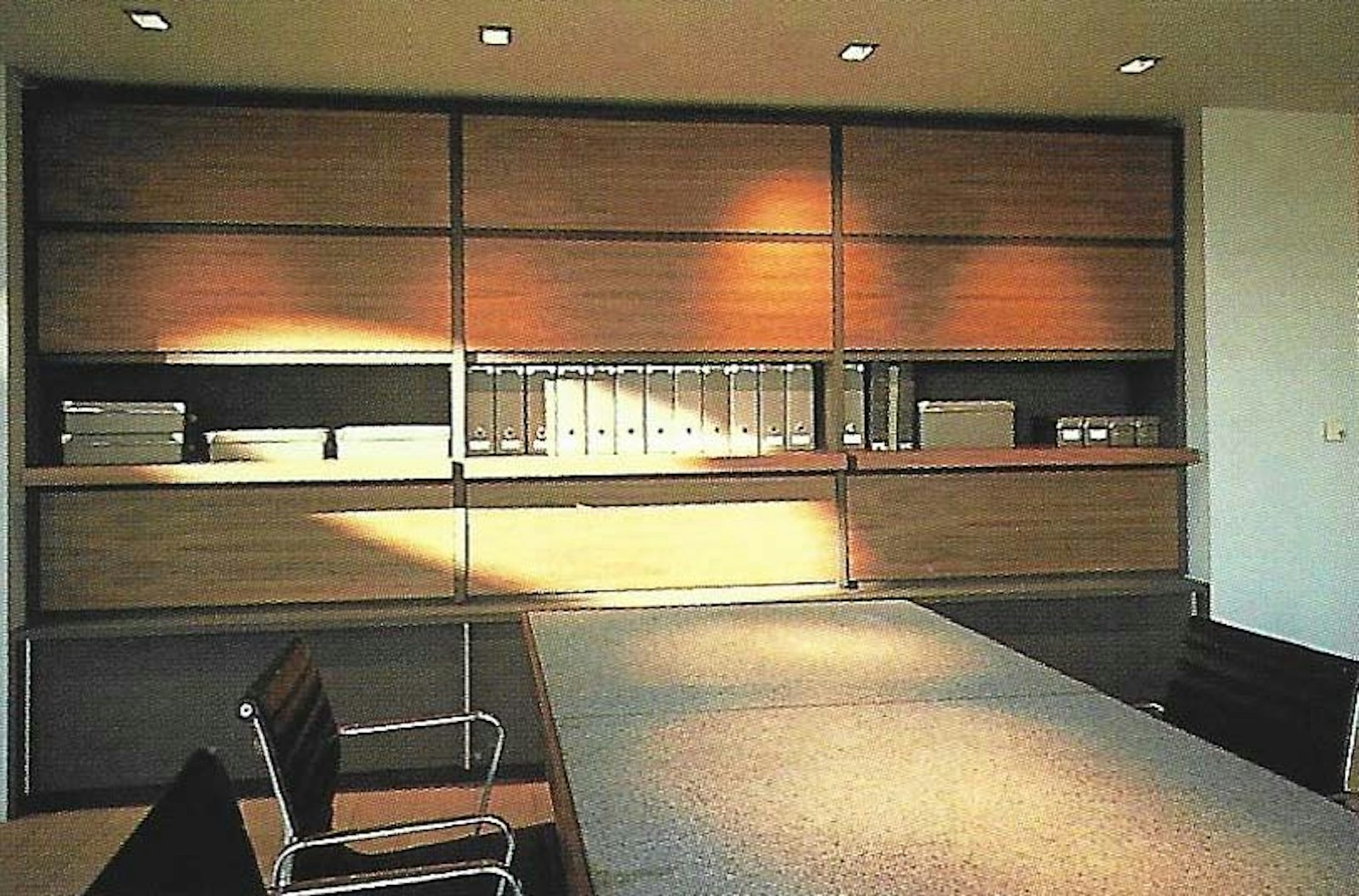de Velde
Spijker Trading cvba
Spijker began as a one-man business in Kruibeke and has always considered professionalism, dedication and craftsmanship of paramount importance.
Now, the company relies on a closely-knit team of specialised and creative entrepreneurs, designers and professionals who only want one thing: to develop a unique furniture collection.
Combining hypermodern techniques and traditional skills, they are able to guarantee high quality products. Extremely detailed and refined working drawings are the basis for an optimal final result. Milling and sawing are computercontrolled, while planing is done by hand. In this way, the same high level of perfection is maintained throughout the process, from the idea and the design up to the final product.
Jean Wauters, designer of the Biblios collection, graduated in 1973 as an interior designer trom the National Higher lnstitute of Architecture and Urban Development in Antwerp. Today, he also is a part-time teacher at the Autonomous College of Antwerp, Department of Architecture.
The Biblios library wall consists of superposed swing cupboards on a basic cupboard with sliding doors. The door can be transformed into a bookshelf with one simpIe downward movement.
When Spijker began to develop the Biblios system in 1994, they started from the following three precepts:
- lt was to be an open library, but not everything had to be shown.
- Empty shelves did not have to filled at all costs.
- Files and such were to be hidden from view.
The most important element therefore was the door that had to be convertible so as to be able to see the cupboard as an open bookcase. The result is a thick bookshelf that looks very robust but that is consistent with its width and the weight of the books. The inevitable seam between the fixed bottom and the mobile door is hardly visible, thanks to the veneer finish. That is why these parts (door and bottom) are always made of wood.
In the first version of Biblios, the doors were heavy and users had to be careful that they did not drop them, because they had no braking device. In 1995, a solution was found for this problem: a mechanism that simultaneously ensures a constant balance of the tilting door, the pivoting motion, and the synchronous sliding motion, and that also serves to keep the door closed. No locks or handles, brake hinges or hinges can be seen.
lnstalling and mounting the Biblios system is easy, as the elements fit into each other like a child's building blocks.



